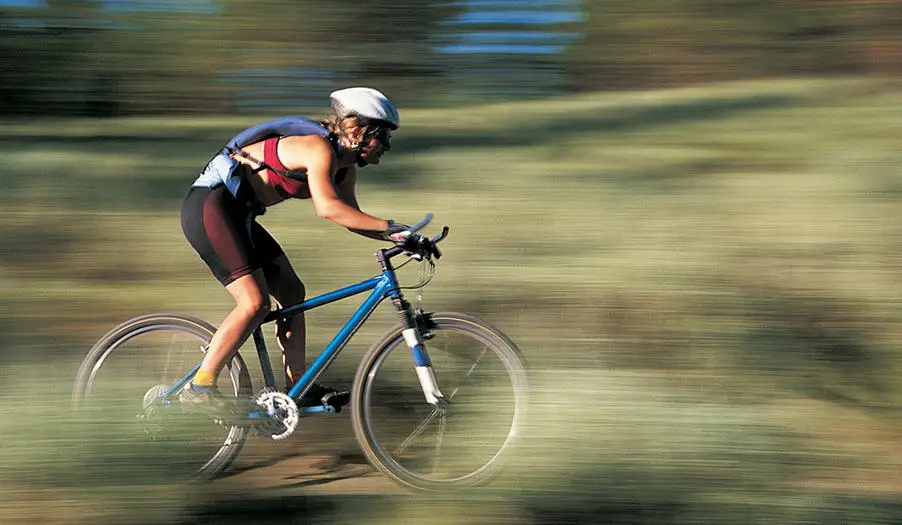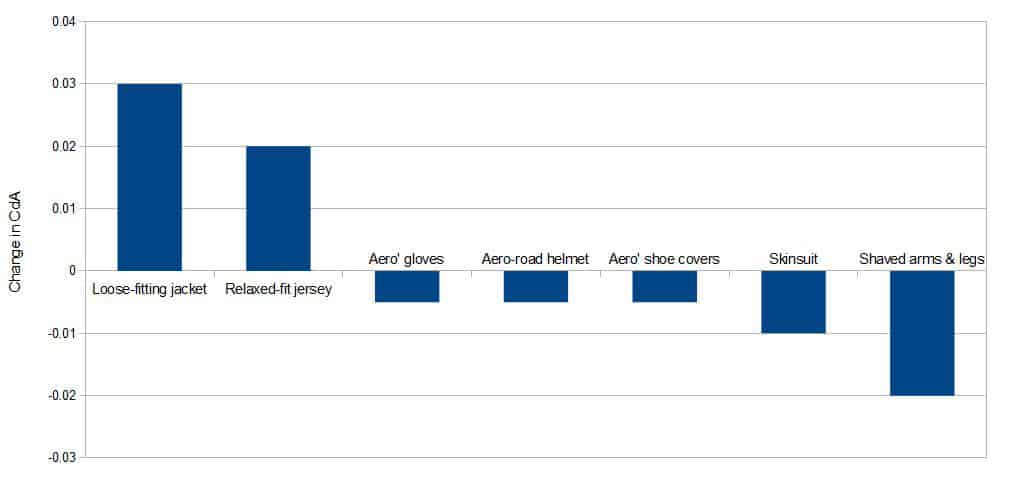
You don’t need to splash out on a nice shiny new road bike to start your bike commute journey. The old mountain bike rusting away in your shed is enough bike to get going. Mountain bikes will not reach the same top speeds as a road bike, and maintaining a high average speed is also challenging.
For a faster commute with a mountain bike make sure you use narrow, slick tyres, avoid unnecessary drag, reduce the weight being carried, improve cadence and power output and improve your seating position for maximum mountain bike speed.
We have a great guide on commuting on a mountain bike which will give you more detailed hints and tips, click here to check it out. Mountain bike commuting is a definite option.
This article gives you the specific information you need in order to take that heavy and cumbersome mountain bike you have locked away and turn it into a more speedy commuter bike enabling you to start to bike commute without breaking the bank.
Change the Tyres
Mountain bikes traditionally have large, wide and heavy off-road tyres to help you navigate the uneven terrain they are designed for. If your commute takes you across challenging terrain, then the mountain bike traditional tyres are ideal. You will have to accept that your commute time is not going to break any records but if you enjoy this route then stick with it.
If, like most people, you commute takes you on hard surfaces, such as roads or paved cycle paths, then to increase mountain bike commute speed you will need to do something about those heavy tyres.
Mountain bike tyres increase the rolling resistance of your ride due to more surface area contact with the road. This means it will take much more effort to overcome this rolling resistance. In addition to the tyre width, the heavy tread on a mountain bike tyre is designed specifically to increase grip on the surface.
Mountain bike tyres and wheel also contribute a surprising amount of additional weight to your ride that you will need extra power to overcome.
Replacing your tyres for a more narrow profile and slicker tread will have a major instant impact on the weight, feel, and speed of your mountain bike and is a fairly easy modification to make.
If you do use the mountain bike for off-road riding and bike commuting, it would be efficient to have an extra set of wheels, with slick, narrow profile tyres incorporated so you can quickly and easily swap out the wheels for each purpose. This will ensure you do not have additional psychological obstacles to overcome to maintain a consistent bike commute routine.
An easy win with regard to improving speed is to ensure your tyres are pumped up to a higher pressure. Aim for about 80+ psi for road and your rolling resistance will be improved dramatically over flatter tyres.
Avoid Drag
In cycling, air resistance counts for 45-55% of a typical cyclist’s total resistance, in comparison weight only accounts for 24% of total resistance, so air resistance is by far the biggest contributor to impacting your average speed.
In a study performed by Ride Far, the key factor affecting air resistance is the rider’s body (75% contributor of total air resistance) and although things like accessories, bags and other items contribute, they are less significant. This resistance is affected mostly by rider size, rider position and choice of clothing.
Changing your body shape and size is not something that can easily be accomplished, at least in the short term, and rider position can add discomfort to your commute that may be less than desirable. When considering a bike commute to work we need it to be a sustainable solution and forcing an uncomfortable riding position may put the average commuter off.
Clothing is a simple improvement that can be made to help your average speed. The graph below shows the impact of different clothing types on aerodynamic drag.

As can be seen, some benefit can be gained by selecting cycling optimised clothing which will help to make a small improvement to your average commute speed.
This doesn’t necessarily mean you have to be clad in lycra from head to toe. It simply means be mindful of the additional effect drag has on your speed, irrespective of your bike. Make sure any clothes are more fitted to your body and avoid anything that will ‘flap’ around as you ride. Waterproof coats are notorious for catching the wind and so make sure you get one that fits more snug.
Reduce Weight
Weight is another key factor in improving top speed. The main weight of the bike is in the frame material. Depending on your mountain bike, you are likely to have a heavier than ideal frame. Carbon road bikes are build for speed and are super lightweight. Mountain bike frames are built more for stability and rougher terrain and as a result are manufactured from heavier materials, steel and aluminium being the most common.
If you are commuting on your mountain bike, changing the frame material is not really an option but there are things you can do to reduce the weight. As a starter, you more narrow wheels with slicker tyres will play a part in weight reduction, so that’s a double benefit and it is where you will get the biggest bang for the buck.
There are other weight reductions up for grabs on a standard mountain bike. An easy target is looking for a lighter weight seat post and saddle. This is an easy and fairly inexpensive swap to shave off a few pounds.
A more drastic modification is to swap out the suspension system. If your route is road or cycle path based, then you do not need suspension, and removing this for fixed forks will reduce the weight of the mountain bike.
Removal of unnecessary ‘bolt-on’ accessories such as water bottle cages, bags and bike locks are other ways to reduce weight. You don’t need them in a lot of cases when commuting.
Cycling speed will improve as you get fitter and leaner. If you reduce your body weight, you will generally have more fun bike commuting, and this will contribute to improving your mountain bike commute speed. Check out this article for the low down on bike commuting and weight loss.
Improve Cadence and Power Output
Cadence on a bike is defined simply as the rate at which a cyclist pedals. Improving, and maintaining cadence will allow you longer and faster-peddling meaning average speed can be improved, even on a mountain bike.
With optimal gear changes, you can maintain cadence over the length of your commute to make improvements on average speed. This article gives great cycling tips on improving cadence for the more serious rider. For the casual bike commuter, I wouldn’t get too hung up about it. Just look to maintain a steady and consistent pace over your commute distance.
The best way of improving cadence and power output, for the casual commuter, is to improve general fitness and, if overweight, look to lose it. Yes, there are specific power increase training plans where you split your rides into interval training regimes but this is more for the hardened cyclist.
Improve Seating Position
Many casual commuters set their bike seat too low which hinders the amount of power they can generate in the pedals. Even on a mountain bike, a lot can be gained by an increase in bike seat height.
Taking your bike to a reputable cycle retailer to perform a proper fit-up of your bike to your body is the best way to get a more efficient riding position which will enable you to push harder for a longer period of time which will have a dramatic impact on your mountain bike commute average time.
When riding off-road, a lower riding position creates more stability but this is not required on the general bike commute so increase that seat height and get more power and efficiency in your technique.
Clip-in Pedals and Shoes
Whilst clip-in pedal systems are expensive and usually reserved for the more experienced cyclists, they can bring a significant improvement in speed.

According to Pedal Chile the clip-in pedal systems allow the shoe to remain in constant contact with the pedal, which in theory assists the propulsion during the upstroke by allowing the cyclist to pull during the recovery phase and are reported to deliver 10% more maximum power output during short periods (<30 seconds) of all-out sprints and steep climbing, compared to flat pedals.
On a personal note, clip-in pedals do take a lot of getting used to, and you will have your fair share of difficulties and near misses with them, but once you do, you can improve speed over longer distances. My opinion is that more of your hamstring takes the load, especially on hill climbs and it allows the leg to go faster for longer and improves endurance.
Mountain Bike Commute
Commuting on a mountain bike is a genuine option, and if you fancy giving bike commuting a go, you can definitely start straight away with that old mountain bike gathering dust. You do not need to spend a lot of money on a specific road bike.
Whilst commuting on mountain bike will be generally slower than the road bike alternative, taking some small steps from this article will help you to improve it and help reduce your commuting time. However, bike commuting brings so many other benefits that average speed should only be one consideration.
If you want to learn more about mountain bike commuting, we have a great general guide on commuting on a mountain bike, click here to check it out.


